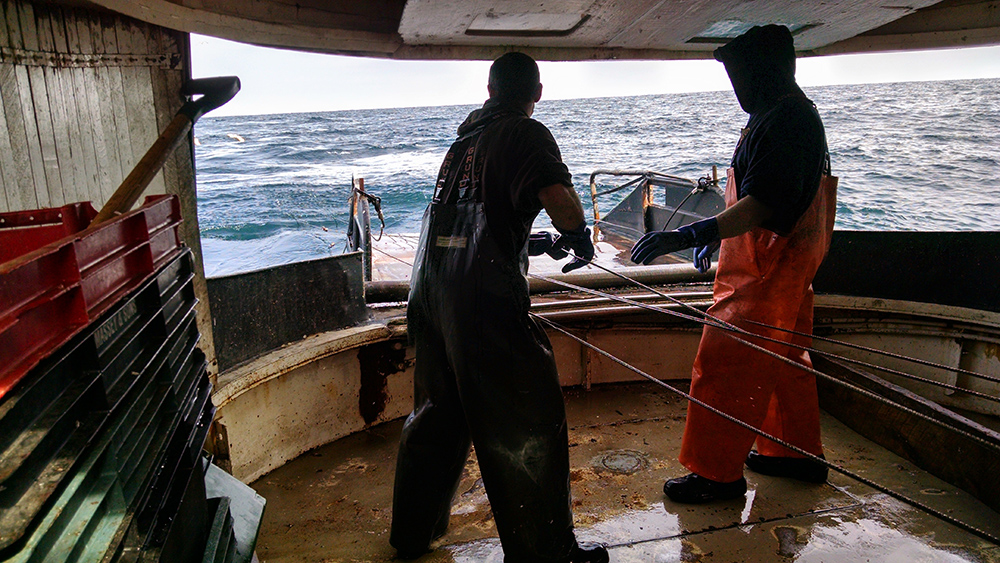"I'd say the fishing is as good as I’ve seen it,” said Craig Hoopman, president of the Wisconsin Lake Superior Commercial Fishing Board and sixth-generation commercial fisherman working out of Bayfield, Wisc. “There are certainly fish but it's hard to say who will be bringing them in over the next few decades. I’m in my 50’s and I’m considered one of the kids.”
The lack of young people in the U.S. willing and able to fish commercially is old news, especially in coastal communities like Bayfield, which grew around the grit of commercial fishing families plying the Great Lakes in the 1800s.
But old news can still galvanize Congress. The U.S. Senate passed the Young Fishermen’s Development Act in December 2020. This bill authorized the National Oceanic and Atmospheric Administration’s Sea Grant Office to provide training and other assistance for young fishermen through an annual grant program that could be worth up to $2 million.
The National Sea Grant Office (NSGO) responded to their new directive. In 2021, they awarded roughly $900,000 to 11 projects that would identify ways to meet the training needs of the future workforce of the U.S. commercial fishing industry. Wisconsin and Michigan Sea Grant led one of these projects, which included interviews with state and tribal commercial fishers and fish processors, a Great Lakes-wide industry survey and a review of existing training programs.
This groundwork is the first step toward implementing the Great Lakes Future Fishers Initiative. The Initiative is envisioned as a recruitment and training program in which commercial fishers would partner with Sea Grant staff to find and mentor new deckhands and processors.
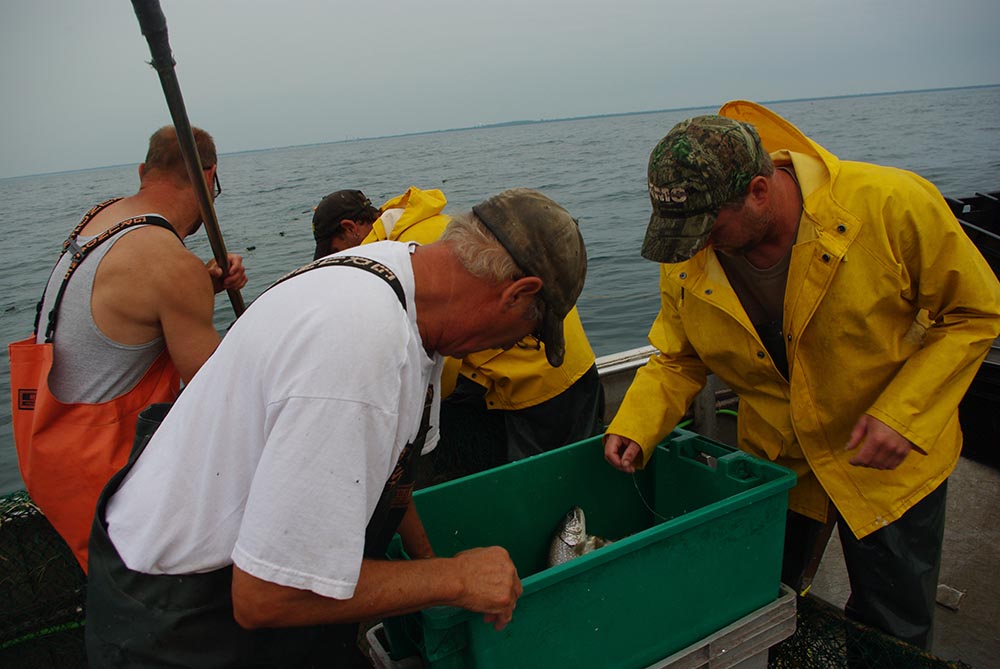
Ideally, the Great Lakes Future Fishers Initiative will compensate participating commercial fishers for their time and expertise. Participating commercial fishers might help to develop recruitment and training materials. They could spend time at job fairs, local schools and technical colleges talking about their work. They will likely spend time in training workshops and mentoring new deckhands. Likewise, the funding being sought would provide financial incentives for those in training.
The Great Lakes Future Fishers Initiative aims to meet the immediate needs of existing fisheries by focusing on providing reliable deckhands who develop skills to keep them employed during the winter months when many Great Lakes fishing operations shut down. Deckhand training is critical to maintaining and growing a Great Lakes fisheries workforce, as is training new people to be fish processors.
As Wisconsin and Michigan Sea Grant staff work with the commercial fishers in their states toward funding and piloting the envisioned Great Lakes Future Fishers Initiative, they are keeping three guiding principles in mind:
1. Keep it local
2. Offer options
3. Support mentors
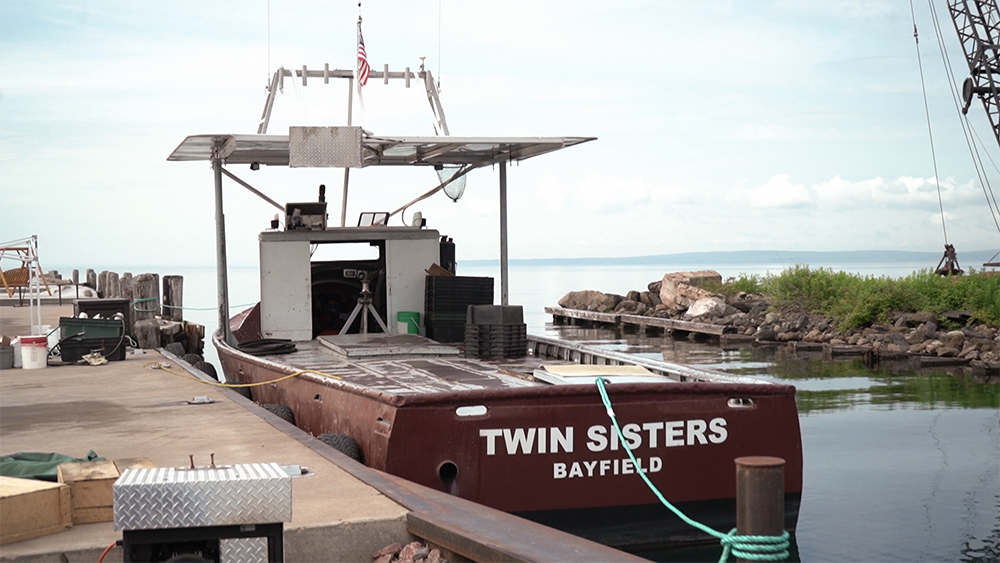
Keep it local
Place-based strategies for recruiting and training efforts conducted in partnership with commercial fishers will maximize the likelihood of recruiting and retaining a new workforce that understands why their work is important and finds deeper meaning in it. It will also keep more economic activities within the community while providing job opportunities for youth and others wanting to stay near their hometowns.
Place-based strategies incorporate the circumstances of a location and actively engage residents. The Great Lakes Future Fishers Initiative envisions identifying commercial fishers willing to work with Sea Grant to mentor new members of the workforce. Together, they will network with local high schools, middle schools and technical colleges to spark students’ interests in life-on-the-water careers, especially with respect to commercial fishing.
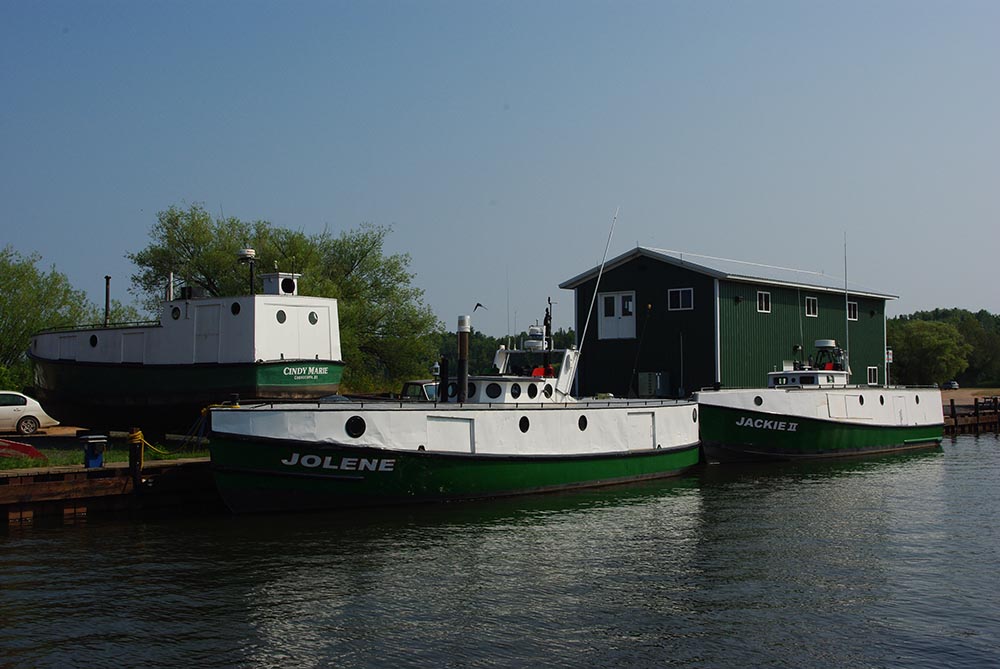
There are an estimated 125 licensed commercial fishermen plying the U.S. waters of the Great Lakes. They tend to have deep roots in their business and their communities. The high cost of start-up and maintenance – including expertise, boats and gear – means that today’s Great Lakes fishers often grew up commercially fishing in a particular place, inherited their livelihoods and would ideally pass their businesses to family members.
An argument for seeking a workforce from within a Great Lakes coastal community includes housing. These communities are often plagued by affordable housing shortages from April to November due to tourism. This timeframe spans the prime months of fishing on the Great Lakes. People who do not live in the fishing community already might not be able to find an affordable place to live. To that point, the Red Cliff Fish Company, run by the tribal council of the Red Cliff Band of Lake Superior Chippewa, suggested possibly using rooms in the casino the tribe manages for housing their fishers-in-training, should band members want to live near the boats.
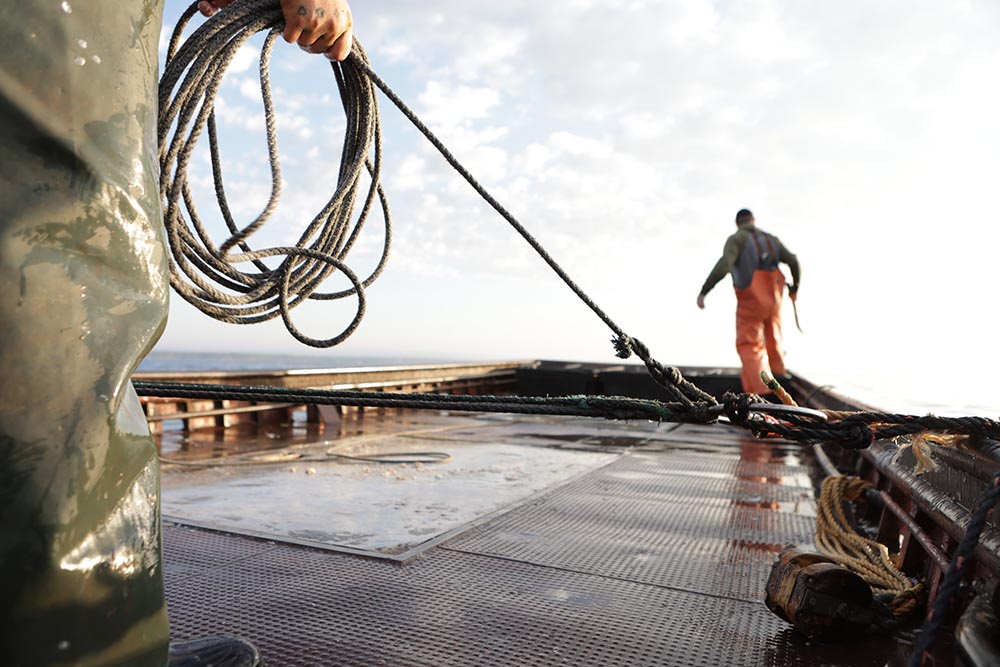
Offer options
The U.S. coastline of the Great Lakes spans 4,530 miles. This is significant in compared to the length of the U.S.’s Atlantic coast (2,165 miles). It’s three times longer than the U.S.’s western seaboard of California, Oregon and Washington (1,293 miles). Adding to that, the U.S. Great Lakes fisheries are managed by eight state and multiple tribal agencies. The physical length and jurisdictional complexity of the Great Lakes suggests that a successful career-building program will benefit from being flexible and adaptive. It will accommodate the specifics: geography, regulations, culture and individual business practices.
Tribal-licensed fishermen are among the 125 commercial fishers. Tribes are working to sustain a commercial fishing workforce within the few remaining indigenous communities exercising their fishing rights on the Great Lakes. Before issuing a license or hiring deckhands, tribal councils typically require applicants to show tribal membership. Fishing as a rights holder, or a sovereign nation, can incorporate cultural practices, values and perspectives not shared by other communities. A training program that is flexible and adaptive would be able to serve both tribal-licensed and state-licensed fishermen.
When surveyed, the Great Lakes commercial fishing industry supported the idea of Sea Grant offering fundamental training that could help and inspire workers. Modules could cover topics such as setting expectations, working across generations and communicating the value of the industry to regulators, consumers and legislators. In areas with increased recreational fishing traffic, new and older fishers might benefit from conflict resolution training.
Many Great Lakes commercial fishers are involved in fish processing. Some have second jobs during the fishing season, such as teaching, nursing, contracting for research or piloting boats. Creating opportunities for cross-training in ways that new fishers have skills that are valuable for multiple industries is important to the envisioned Great Lakes Future Fishers Initiative. For example, CPR, first aid and heavy machinery safety training could lead to working as a first responder. Engine repair and welding skills could lead to jobs that require mechanical know-how such as in an automotive shop. Sanitation control procedures and knife skills training could open opportunities in catering or restaurants.
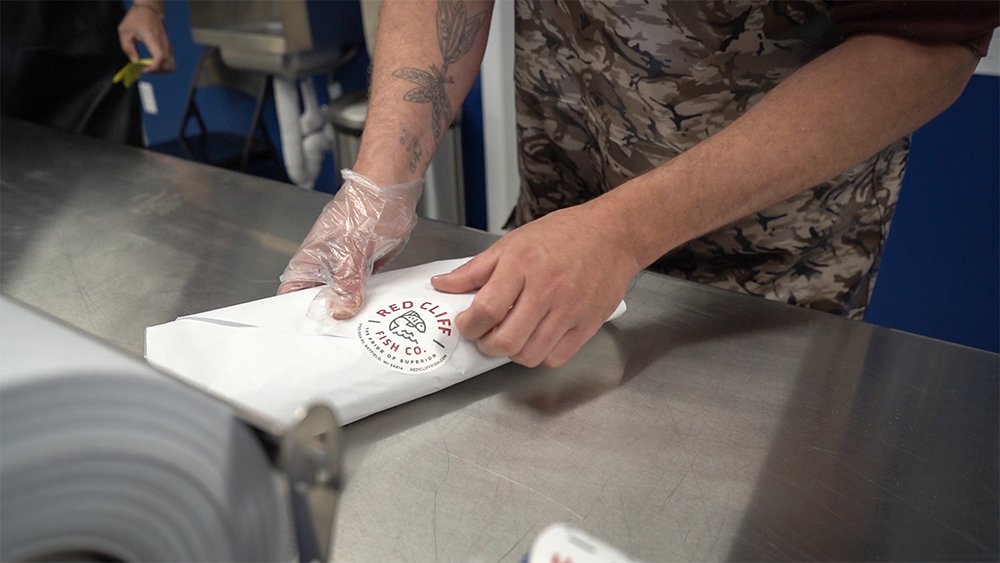
Support mentors
Great Lakes fishers and fish processors indicate that they are ready and willing to mentor a new workforce. They seek workers who show up and are willing to learn skills such as handling nets and how to cut a fish. The hours can be odd and long. The work can be messy and seasonal. A passion for being on the water as the sun rises seems to keep many commercial fishers motivated.
It was clear that the Great Lakes fishers and fish processors would prefer training their workers themselves when it comes to certain skills. They envisioned that the Great Lakes Future Fishers Initiative would allocate time for the employers to train new workers to lift nets, cut fish and work with the automated equipment on their boats and in their processing facilities.
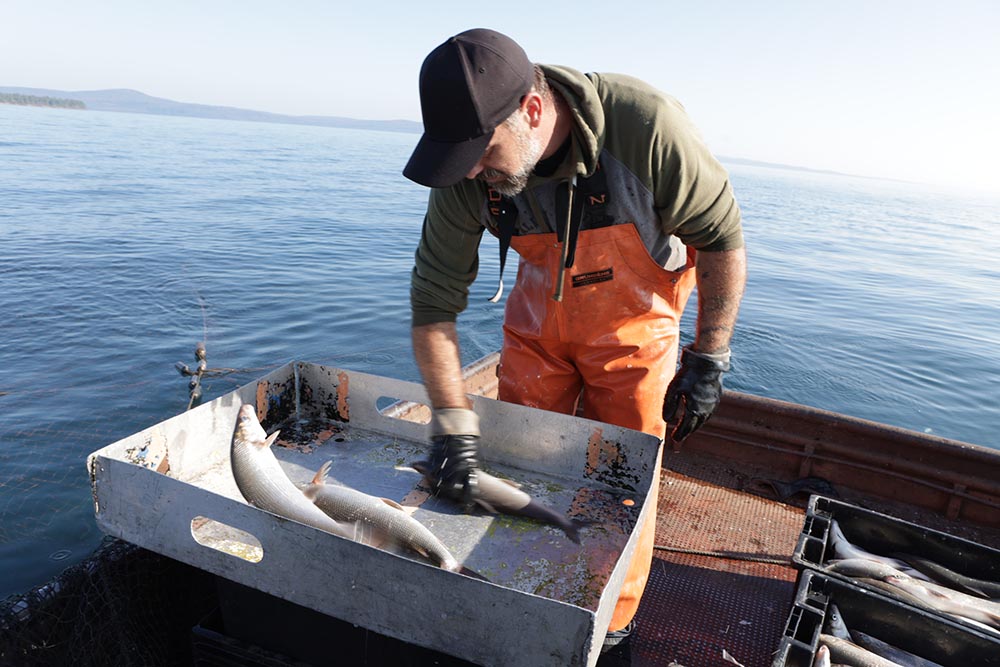
Eyes on the horizon
Many existing training programs for commercial fishers focus on smaller geographies than the Great Lakes. The nine U.S. apprenticeship programs examined by the Great Lakes Sea Grant team required little to no experience for participation. While most of the programs include some component of classroom instruction, the coursework is not grueling. For example, Rhode Island’s program focused on safety and fishing fundamentals through a workshop with a goal of producing reliable deckhands. Most apprenticeships provided hands-on seamanship or boating and fishing experience. Among the programs that included classroom instruction, only one offered virtual learning in combination with in-person. Given the regulatory and geographical complexity of the region, online and in-person programming would increase the flexibility of the Great Lakes Future Fishers Initiative.
Trends regarding paid apprenticeships and course fees show that increasing class time increases fees. It also decreases the likelihood that a trainee gets compensated for their time. More than half of the apprenticeship programs did not pay their apprentices during training. Typically, these were the programs with class components, which usually required trainees to pay for tuition or materials. The programs that paid participants did so at $16-24/hour, the same amount as a regular crew member might make. These latter programs focused more on cultivating mechanical and technical skills.
Inevitably there will be some tough conversations. There already have been. For starters, this nagging question has been hard to ignore: Is it prudent to train new fishers and deckhands for Great Lakes work when state regulations and ecosystem changes are making it challenging for the industry to succeed?
The interplay among the commercial, charter and recreational angler industries is also important to dissect. As one Lake Michigan commercial fisher puts it, “We have to decide if the Great Lakes are the playground of the well-off or a place that provides food for our communities.”
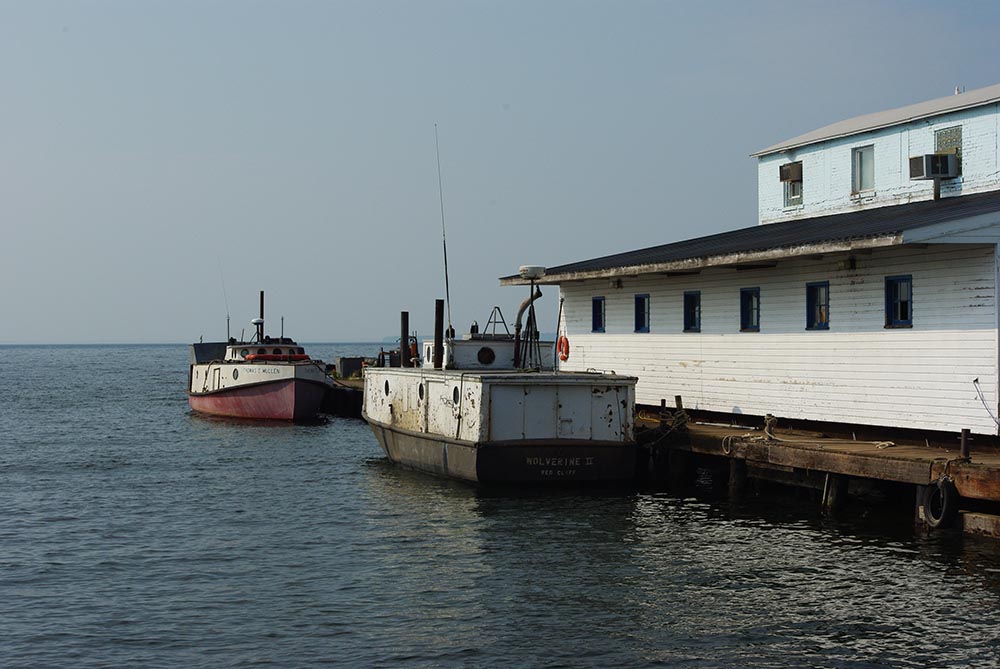
The commercial fishing industry is not alone in its workforce challenges. The U.S. Congress is aware of the storm on the horizon with respect to the nation’s food security. In fact, the U.S. Department of Agriculture (USDA) announced in July 2022 that they will provide the meat processing sector with $14 million for agricultural workforce training. The USDA’s goals for this program are to help stabilize America’s rural communities and food supply chain by creating more competitiveness and diversity for both meat packers and meat packing facilities. These strategies may also work for the fishing industry.
Charlie Henriksen, Chairman of the Wisconsin Lake Michigan Commercial Fishing Board and commercial fisherman working out of his dock in Sand Bay, east of Sister Bay Wisconsin, said. “It’s tough. There aren't a lot of young people jumping in to be Great Lakes fishermen these days and there are a variety of reasons for that. My partner, my 31-year-old son, Will is fishing but crew will be a limiting factor. Quite a few of our fishermen are gloomy about the future of their boats and nets. We’re excited that Sea Grant and Congress are recognizing that we’re still here, we’re still fishing and we need a few good deckhands.”
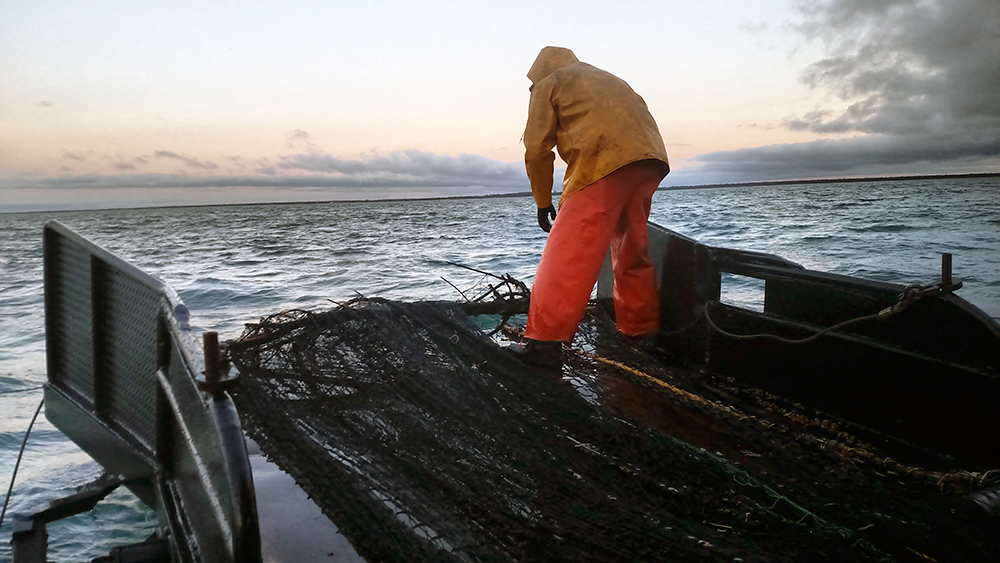
Era | Timeframe | What Happened |
Indigenous Harvests | Circa 4000 BC - 1800 AD (~ 6,000 years) | The glaciers retreat and people move into the region. Hooks and bones provide evidence that the Old Copper Culture fished thousands of years ago. The writings of European explorers and settlers indicate that fish was an essential part of Indigenous diets. |
Boom, Bust, Treaties | 1800-1950 (~ 150 years) | European fishers are encouraged to harvest enormous quantities of fish with no or little regulation. Tribes and the U.S. Government sign treaties (1836, 1837, 1842, and 1854) that preserve tribal fishing and hunting rights in areas of the Great Lakes. Invasive sea lamprey swim through canals and decimate Lake Trout populations. Industrialization and landscape changes destroy habitats and pollute water. Major fisheries collapse. |
Sports and Sustainability | 1950-present (~ 70 years) | Natural resource management agencies begin regulating the fisheries with more vigor. The 1954 Convention on Great Lakes Fisheries creates the Great Lakes Fishery Commission to control sea lamprey, advance science and help agencies work together. Fishing culture changes as people have more leisure time and disposable income for hobby fishing. The introduction of Pacific salmon in the 1960s boosts the recreational fishing industry. States began managing the fisheries primarily for the recreational and sporting industries. Additional invasive species (namely zebra and quagga mussels) create dramatic food web changes in all of the Great Lakes except Lake Superior. |
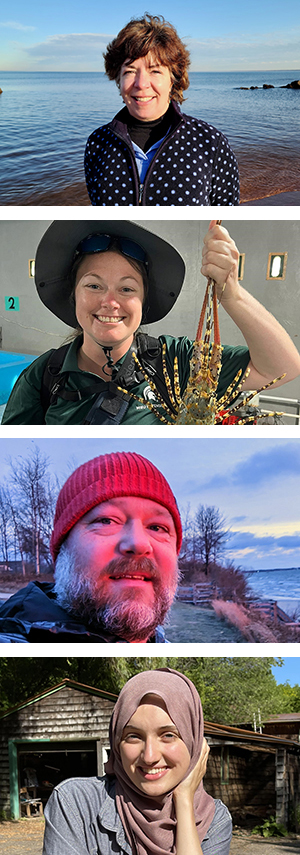 Sharon Moen is Wisconsin Sea Grant's food-fish outreach coordinator based out of Superior, Wis.
Sharon Moen is Wisconsin Sea Grant's food-fish outreach coordinator based out of Superior, Wis.
Dr. Lauren Jescovitch is a fisheries and aquaculture extension educator for Michigan Sea Grant and Michigan State University in the Houghton/Hancock area of Mich.
Dr. Titus Seilheimer is Wisconsin Sea Grant's fisheries specialist based out of Manitowoc, Wis.
Fatima Abdl-Haleem is a master's degree candidate in Environment and Resources at the University of Wisconsin - Madison.





